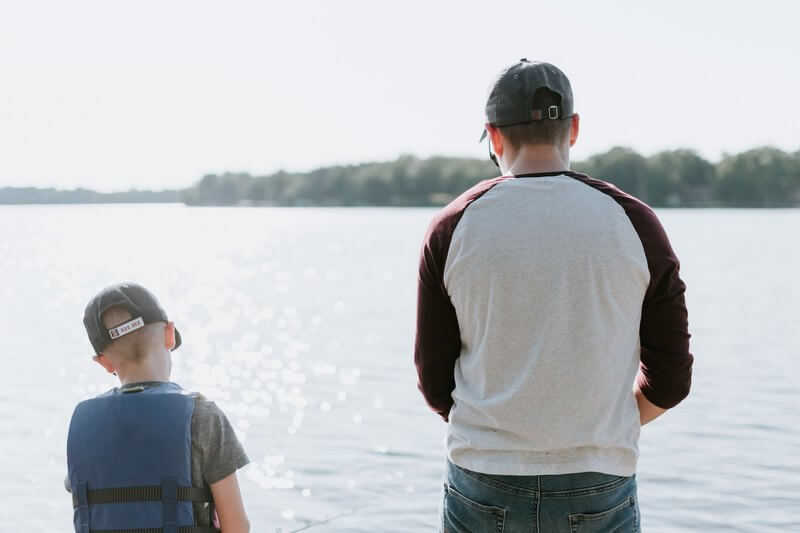
The problem with multitasking
The problem with multitasking is that, in the end, you end up not being able to focus on any one thing well. Author Jeff Shannon wrote a book I referenced in my blog, 911 Is Not Showing Up. He shared that an issue with many of today’s workers is leveraging multitasking to deliver on work products while participating in other activities such as meetings. For many of us in the resilience profession, under-resourced and attempting to deliver on multiple projects simultaneously, it can seem as if multitasking is the only choice. However, Shannon argues that focusing on completing a task more efficiently and effectively is better. He also argues that we need to let some fires burn to give us time to focus on value-added activities. Otherwise, we end up exhausted, distracted, and unable to maximize work products—BIA, reporting, plan development and exercising—in the most effective way.
Efficiency is a mantra drilled into many of us. We attempt to do many things to demonstrate our value and burn ourselves out. My blog, Selfcare for Disaster Professionals, speaks to the necessity for us to take care of ourselves first. The nature of our work is that we seek to prevent, mitigate, or anticipate harm to others. Yet, we are often the first to overcommit to prove our value. While working with the MA Dept. of Public Health Office of Preparedness and Emergency Management, I remember focusing so hard on my job to support the emergency process that I failed to recognize that the emergency preparedness director’s health was failing in front of me. It was a lesson in situational awareness as much as learning to focus on one task at a time. She’d given me a clue about her condition, but I failed to recognize the warning signs as I was distracted by other assigned work.

Resilient me
More now than ever, with the frequency and intensity of crises on the rise, we must walk the walk and talk the talk. As Sara Pratley of Alert Media shared at DRJ Fall 2022, the cost and frequency of natural disasters are rising globally. Natural disasters caused overall losses of $280 million in the US in 2021 (Source: Munich Re, NatCatService, 2022). Resiliency starts with the individual, and we should model this behavior as an example of our programs. Modeling includes learning to focus on a task rather than many at once. Now, if you are a rare person who already practices this, the blog is not for you. However, I guess many of you, like me, suffer from multitasking. And COVID only made it worse. For me, not only did I try to support the 2+ year long response, but I also continued to move forward with some administrative tasks.
I struggled between the holidays last year and this summer for many reasons. It was a long burn, but I found myself on a roller coaster of letting my self-care degrade as I took on more at work and in my life. Recently, I experienced an epiphany inspired by Michele Turner’s book. Then, I was introduced to Jeff Shannon’s work of coaching executives and building believability in the workplace. These events led me to regroup and refresh on the importance of holistic resiliency.

The imposiblity of focusing on 2 things at once
Next, as I followed Michelle Turner’s and Jeff Shannon’s advice, it became clear that effectiveness is better than efficiency. Delivery holds increased value over the execution of objectives. As professionals, especially in the US, we are trained that hard work achieves success. Learning that hard work is not enough to gain influence is a hard lesson. And influence is what many of us desperately need and lack to effectively sway leadership regarding a resilience program’s value. In the Resilience Series – Strategy, I argued that our senior managements and boards understand resilience. I am not walking back from that. Instead, I say we need to increase our ability to obtain and maintain a minimum steady-state program by engaging with leadership. The problem with multitasking is that the human brain, although wired to receive many inputs of information, is not good at responding to many things simultaneously. Neurological science has demonstrated that the human brain is incapable of focusing on two things at once (Source: Hernandez, Morela, The Impossibility of Focusing on Two Things at Once, 2018).
Instead of working hard and playing harder, my mantra is becoming work smarter and play often. For my professional life, it’s time to start playing chess rather than checkers. I fully admit that I played more checkers in the past than I care to admit. So, to deliver the most effective program possible, I’m targeting effectiveness rather than efficiency. Rather than crossing all the I’s and dotting the T’s, my goal is to strive for the Pareto Rule, known commonly as the 80/20 rule. As program owners, achieving the most critical goals is better than all planned. Connecting to the organization’s objectives is more important than the following ISO 22301 letter. Not to be too dramatic, but I believe the health of our companies demands it.

Teach one, reach one
You likely know the saying, Give a Man a Fish, and You Feed Him for a Day. Teach a Man To Fish, and You Feed Him for a Lifetime. We must champion resilience across the enterprise. We learned that BC, DR, and Crisis Management developed with worst-case scenarios in mind. Also, planning is typically designed for impacts and takes an all-hazards approach. However, the new everyday demands that we identify what a crisis is to the business and the risks from Business as Usual (BAU) through a catastrophe. I see no indication that events are doing anything but increasing in scope, scale, and frequency (Source: Munich Re | 2017-2021).
Then, engaging the entire organization in a resilient mindset is critical. I am not naive enough to believe change will happen overnight. Yet, I think that it must happen soon. Already, I hear leaders indicating that resilience is the mindset they are embracing, along with an increased understanding of risk. For years, we’ve worked to prepare businesses for interruptions. Now, there needs to be a recognition that nimbleness and agility require companies to embed resilience into their everyday operational practices. A young man I met at DRJ’s Fall (2022) conference pointed out that his generation is used to disasters. They’ve never known a world without crisis—from 9/11 to the Ukraine war. We need to teach individual and organizational resilience better if we want to thrive in the future.

How to stop multitasking
Developing a culture of focus and the ability to read each situation is vital to imbed resilience. Building this skill requires an ability to be present at the moment. Now, I admit this is challenging in light of the world around us with its ongoing distractions. However, to rise above daily distractions and create world-class resilience programs demands laser focus and Zenlike abilities.
Jeff Shannon recommends the following approach for our work lives:
- Reduce meeting attendance: To increase focus, reduce the number of meetings you attend. Do this by evaluating the meetings where you are asked to contribute vs. are only being briefed. The latter are ones you do not need to attend; ask the organizer to send you an email instead.
- Be ready to define purpose: When you ask others to meetings, provide a clear plan and understanding of the actions required of them. Doing this reduces unnecessary discussions and boosts you as believable and compelling.
- Analyze your work by value-added contributions and limit non-value-added tasks.
- Be present in the meetings you attend; don’t let your focus go elsewhere. Enabling yourself to contribute meaningfully will increase your effectiveness and value to the organization.
For more on building believability and executive presence at work, I recommend Jeff’s book Hard Work Is Not Enough.
Some other ways to limit multitasking are:
- Mindfulness: If you don’t already practice mindfulness, meditation, or yoga, I highly recommend starting. All these pathways will increase your ability to be “in the now” and situational awareness.
- Gratitude: My tip also includes a daily practice of appreciation. There are many forms of gratitude, whether prayer or thankfulness through journalling or daily grace. It also is a way to be present at the moment and appreciate the everyday.
- Good health: Additionally, exercise, good nutrition, and a commitment to maximizing your wellness and those around you help to enable focus and limit brain fog.

Becoming a Zen master
Now, Zen is a lifelong discipline. It’s a way of life that few are drawn to, but for those who do, it is said to provide great inner stillness, contentment, and deep knowledge of the world around us. Masters gain renown for their ability to master Zen Buddhist philosophies. Let’s become the Zen masters of resilience and bring insight and enlightened counsel to our leaders in service to the greater good. I’m not asking you to become a Zen monk but to emulate their best attributes. Bring a renewed focus to your work, seeking to share your knowledge and best counsel within your companies to contribute to a strong, flexible, and elastic organization.
Doing this will prepare the business and employees for the shocks to come. We can’t stop adverse advents from happening, but we can do our best to minimize the adverse effects. After all, as a colleague recently said, that’s what they pay us for. Our role was mainly reactive in the past, but we can become the vanguard for change. What better legacy to not only be there to assist response and recovery but to enable risk monitoring and build resilient organizations?

Next steps
In this blog, I’ve discussed the problem with multitasking and ideas about how to become more focused at work. I also argued that it starts with building capacity in yourself. We can’t ask others to do what we don’t do well ourselves. Now, I don’t expect us to become Zen masters but to learn techniques that help us achieve those capabilities. If you are engaging in a high degree of multitasking today, your first step is to stop by following the guidelines outlined above. Then, you can start to model and teach it to others.
Together, we can become effective resilience practitioners and increase programmatic value across our businesses. It is good business to do this in today’s increasingly connected world of high reliance on subcontracts, vendors, and supply chains. Because resilient organizations help us all along the operational continuum, think of it as akin to community resilience for the business world. What helps one ultimately benefits us all. So, the problem with multitasking is that it hurts us all in the long run, reducing timeliness, return on value, and downstream, along with upstream resilience.

2 thoughts on “The Problem With Multitasking”
Well said, as usual. Be Present is as powerful a two words as you may find in leadership. I think that is a key fundamental part of the role, being there for your team – truly being there for what they need. I would never think of myself as Buddhist or an expert in that philosophy, but I have read a bit about it. I think being present is important in Buddhism and what you said about about being a Zen master in resilience is crucial – be present when you are responding to a crisis or helping others.
Be present – wise words.
Thank you and I appreciate your perspective